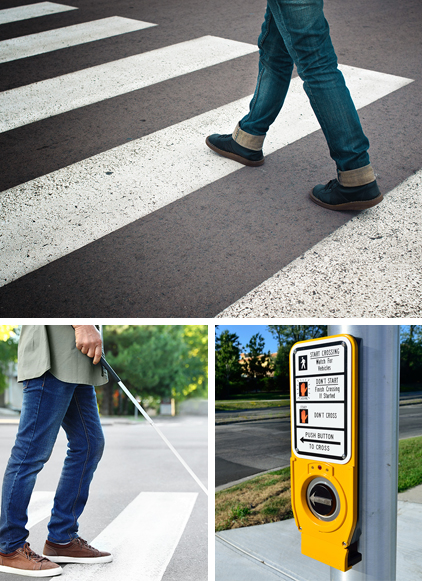Safety and Traffic Engineering
Accessible Pedestrian Signals (APS)

Accessible sidewalks and street crossings are vital for pedestrians with vision impairments. Accessible Pedestrian Signals communicate information about the time of a crossing using non-visual formats such as audible tones, verbal messages, and/or vibrating surfaces.
Why Use Them
Research has found that APS improved crossing performance by blind pedestrians
- More accurate judgments of the onset of the WALK interval
- Reduction in crossings begun during DONT WALK
- Reduced delay
- Significantly more crossings completed before the signal changed
How They Work
APS can provide information to pedestrians about:
- Existence of and location of the pushbutton
- Beginning of the WALK interval
- Direction of the crosswalk and location of the destination curb
- Intersection street names in Braille, raised print, or through speech messages
- Intersection signalization with a speech message
- Intersection geometry through tactile maps and diagrams, or through speech messages
